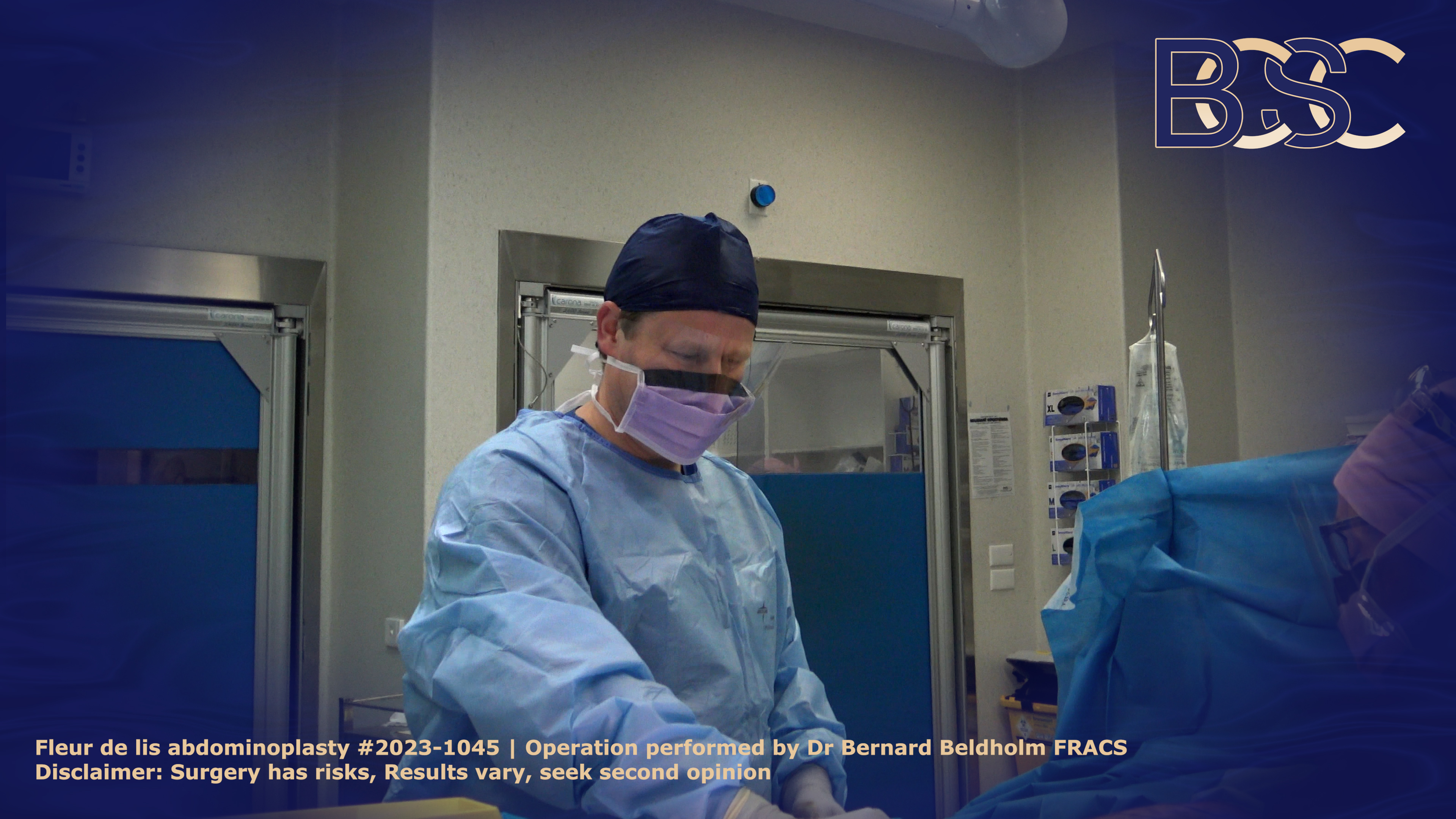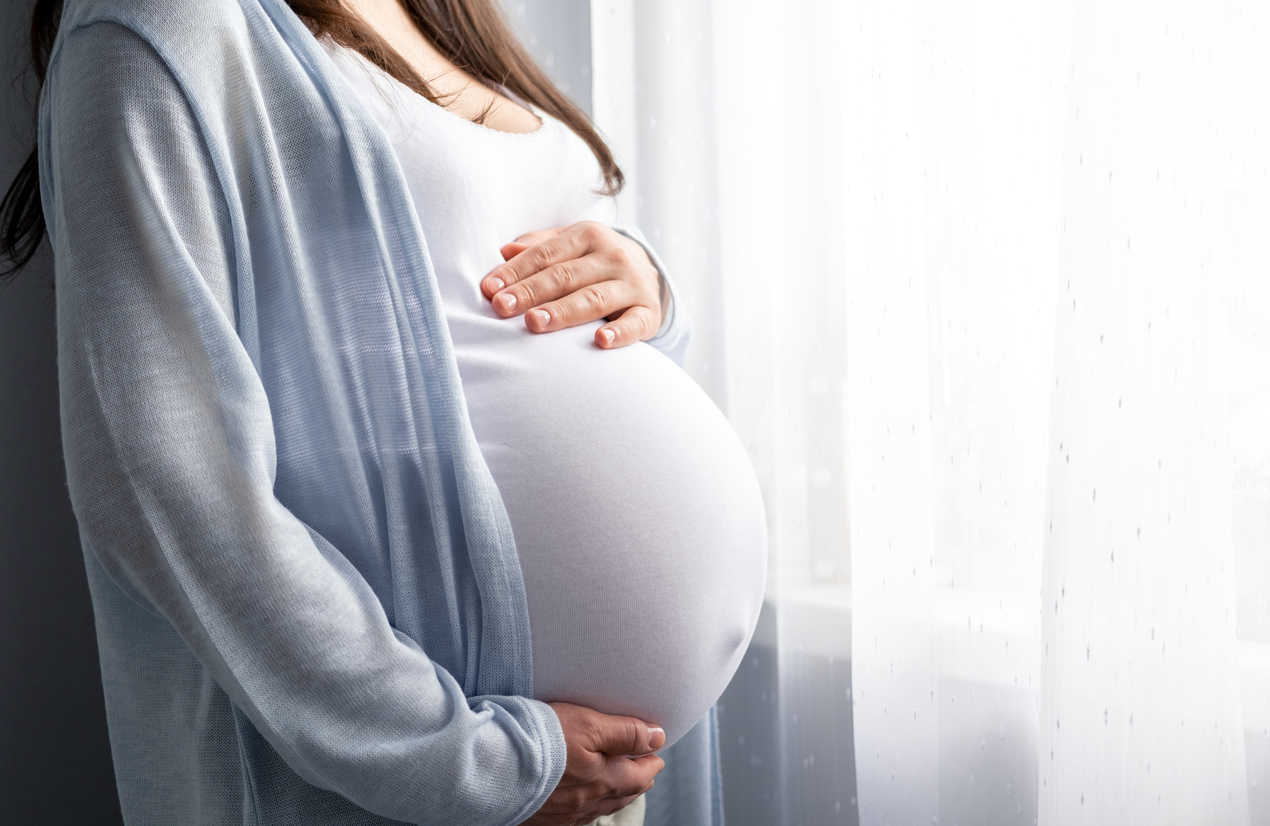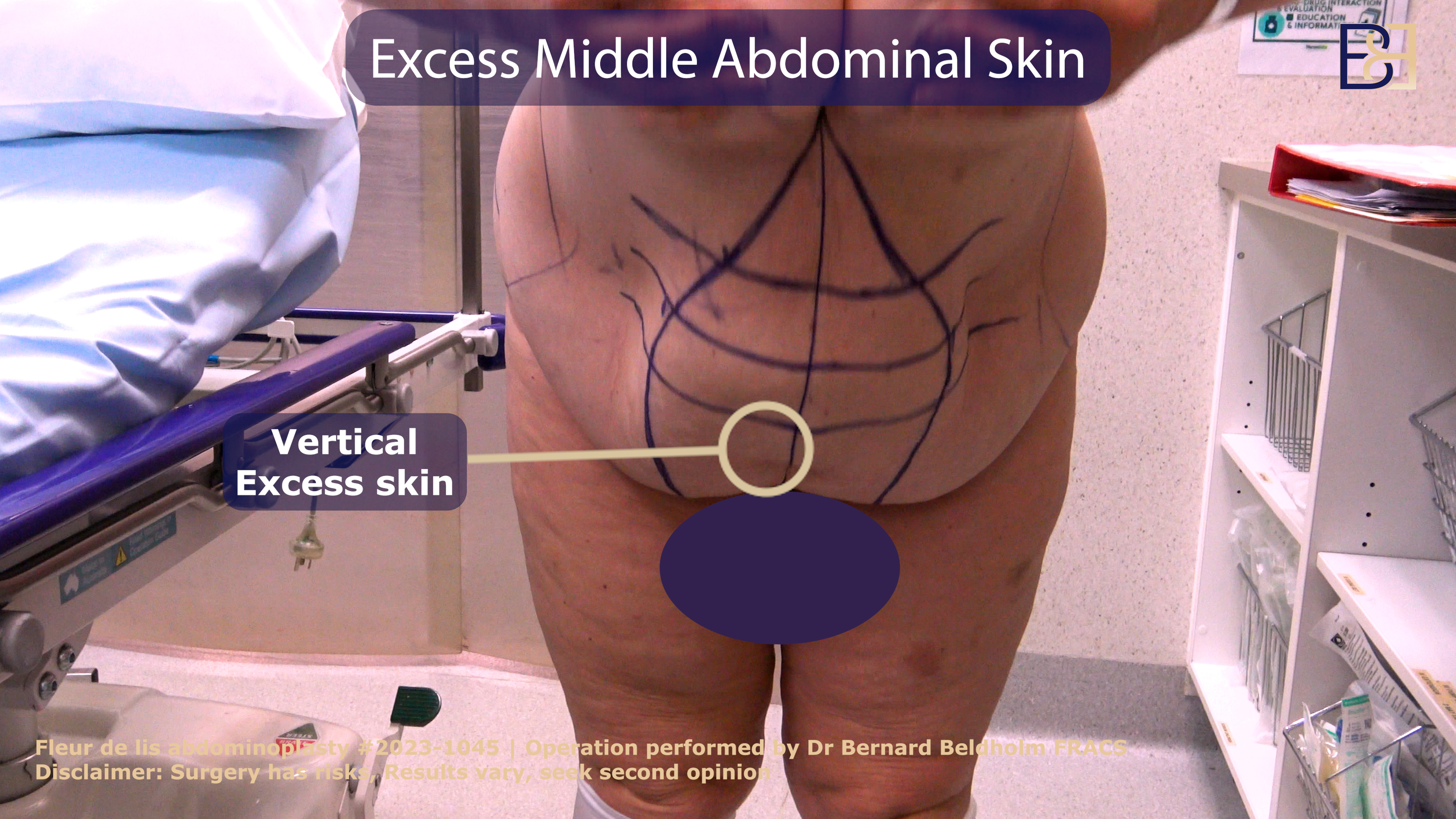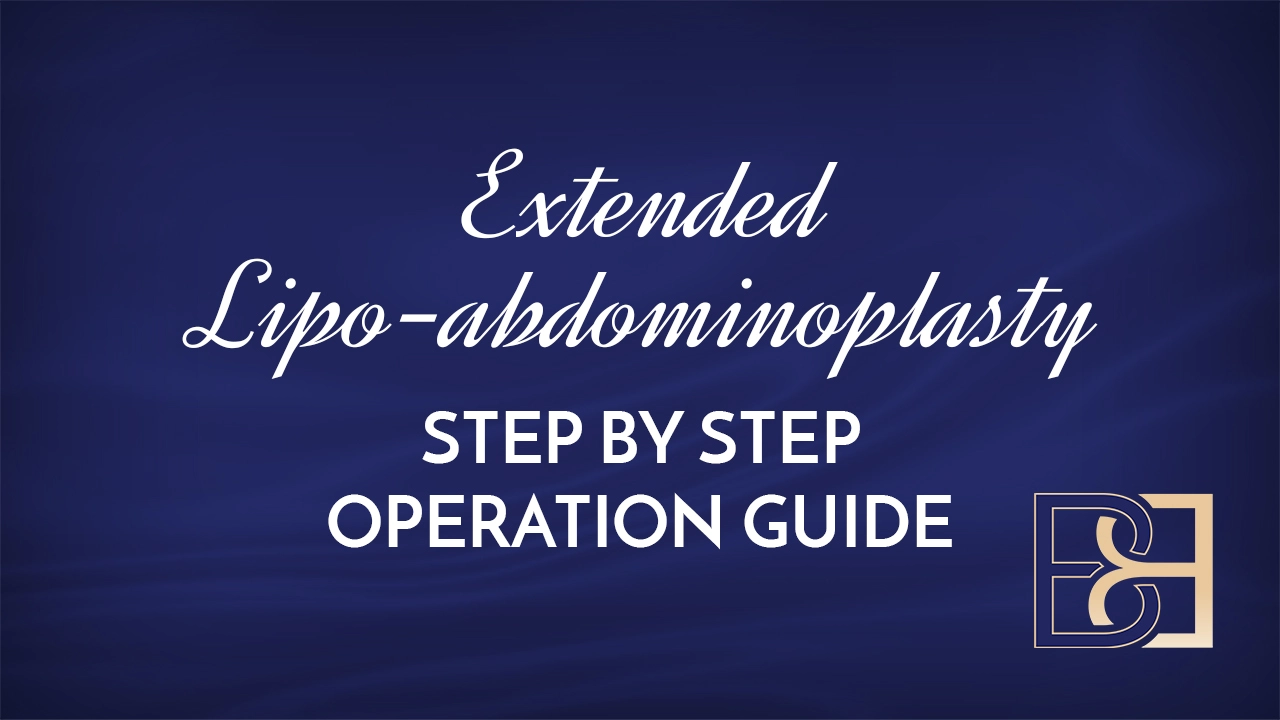One of the top concerns surrounding pregnancy after Fleur-De-Lis Abdominoplasty (Tummy Tuck) is the reopening of unhealed incisions, which is why I suggest waiting 12 months after your FDL before considering pregnancy. Pregnancy following FDL might lead to additional concerns as well, such as stretching abdominal muscles, discomfort, and skin changes.
Most patients come for their Fleur-De-Lis procedures to get rid of excess skin after pregnancy and post-weight loss. But you may wonder if it is okay to get pregnant after your FDL procedure and whether you could experience any complications during your pregnancy as a result.
Book your appointment online now
Our discussion today revolves around planning your pregnancy after Fleur-De-Lis abdominoplasty surgery. Both procedures will affect your abdominal muscles, and it is crucial to approach and combine both with care.

Fleur-De-Lis Abdominoplasty Explained
Fleur-de-lis abdominoplasty is a common choice for many of my patients, especially after bariatric surgery and other weight loss procedures.
FDL abdominoplasty aims to reduce excess abdominal skin and tighten loose abdominal muscles in your lower and upper abdomen. During the tummy tuck procedure, I make vertical and horizontal incisions on your abdomen to ** as much excess skin as possible. Fleur-de-lis has various benefits, such as ** your body posture, tightening your loose abdominal muscles, and reducing the risk of getting infections brought about by excess skin.
FDL procedures can be both cosmetic and medically necessary. A medically necessary condition is one that affects your physical and psychological functioning.

Correlation Between Weight and Fertility
Excess weight can affect fertility and pregnancy in a number of ways.
Women who are overweight and obese have higher hormone leptin levels produced by the fatty tissue, which can cause hormonal imbalance, reducing fertility.
Hormonal imbalances caused by obesity or excess weight can also increase the chances of anovulation, a condition where your ovaries release no egg during the menstruation cycle.
The odds of conceiving are significantly against you if you have a BMI (body mass index) of above 27.
Excess weight, especially excess abdominal fat, causes insulin resistance, a condition in which your body is forced to produce more insulin to keep your blood sugar levels standard.
Excess weight also limits the production of SHBG (sex hormone binding globulin) which is crucial in regulating the sex hormones oestrogen and androgen.
Health Concerns Related to Obesity
Obesity is not only a cosmetic problem; it is a medical concern associated with other health problems and diseases. Some common health concerns include high cholesterol, heart disease, high blood pressure, diabetes, liver disease, certain cancer types, etc. Obesity may result from physiological, inherited, or environmental factors associated with physical activity, diet, and lifestyle choices.
BMI (body mass index) is used to determine whether you are obese or overweight. If your BMI index is between 25 and 29.9, you are considered overweight. Anything above that is considered obese.

Am I a Suitable Patient for Fleur-De-Lis Surgery?
Before I perform Fleur-de-lis abdominoplasty, I insist on a consultation to determine if the procedure is your ideal option. During this session, I will consider various factors, such as your existing medical conditions, preferences, needs, and expected results, to determine the suitable procedure.
In my experience, you can consider Fleur-de-lis if you have a stable weight and associated loose skin from weight loss. Sudden weight changes can lead to wound dehiscence, increasing the risk of surgical site infections.
I also recommend you consider Fleur-de-lis if you have had multiple pregnancies. Multiple pregnancies do weaken your abdominal muscles, causing them to separate, leading to a condition known as diastasis recti. This condition occurs when the linea alba becomes too weak to support the abdominal muscles and organs. Fleur-de-lis abdominoplasty can remedy these conditions by tightening and repairing the weakened linea alba.
You are also a good candidate if you are a non-smoker. Smoking affects the Fleur-de-lis abdominoplasty recovery process and increases the risk of developing post-surgery complications. I advise you to quit smoking for a minimum of six weeks prior to and after your Fleur-de-lis tummy tuck (abdominoplasty) This gives your body the time it needs to increase the oxygen supply to the surgical site and avoid vasoconstriction.
Who Is Not a Good Candidate for FDL Surgery?
Fleur-de-lis abdominoplasty is not your remedy if you are a smoker. Even though you might be suffering from diastasis recti and have a standard body mass index, I do not recommend the procedure if you smoke and are unwilling to quit for 6 weeks before and after the surgery. This is because the standard tummy tuck is an invasive surgery that requires vertical and horizontal incisions. These incision sites are extensive and require the best conditions to heal properly.
Smoking hinders the healing process in this delicate region, increasing the chances of developing post-surgical infections. A National Library of Medicine study shows that “[t]he length of hospital stay was significantly increased in smokers compared with nonsmokers. Our analysis indicates that smoking is associated with an increased risk of surgical site infection, wound disruption, and postoperative pulmonary complications. The results may drive the clinicians to encourage patients to quit smoking before surgery.”
Ideal Waiting Period After FDL Surgery Before Considering Pregnancy
I recommend waiting a minimum of 12 months after FDL surgery before considering pregnancy. This gives the vertical and horizontal incision wounds enough time to heal, reducing the chances of developing post-surgery complications. Also, this waiting period allows abdominal muscle repair, allowing you to have an easier time during your pregnancy.
There are numerous risks of getting pregnant immediately after your FDL. For instance, pregnancy causes stress on your abdomen, affecting the recently tightened muscles. Too much strain on this delicate region can cause muscle re-separation. This could result in the need for corrective surgery.
Also, your abdominal muscles will be weak after the FDL procedure. Not allowing these muscles enough time to regain strength will affect your posture and mobility during pregnancy. Therefore, I highly recommend coming in for a consultation so that we can create a plan to ensure you have a smooth pregnancy after your Fleur-de-lis abdominoplasty.
Can My FDL Incision Be Used for My C Section?
Yes. I will make the FDL incision on your lower abdomen, the same location required for a C-section. By using the same incision used during C-section we prevent additional scarring.
The decision, however, is not straightforward. The surgeon performing your C-section has to consider the incision location and depth. For instance, a lowly placed FDL incision, one placed below your bikini line, is not ideal for a C-section.
If you wish to have a C-section after your FDL, I encourage you to bring it up during our conversation. This will help us plan a surgical technique to accommodate your Fleur-de-lis and Caesarean section plans.

Will My New Pregnancy Compromise My Abdominoplasty Results?
Yes, a new pregnancy will cause your abdominal skin to stretch, affecting your Fleur-de-lis abdominoplasty results. As your abdomen protrudes, it adds extra pressure on your Linea alba, causing your abdominal muscles to weaken.
Also, hormonal changes during pregnancy might cause skin laxity. The downside is that your skin won’t go back to its earlier state after the pregnancy.
This is why I strongly suggest waiting 12 months after your FDL before getting pregnant.
Caesarean Section Delivery vs Vaginal Birth After FDL Surgery
When it comes to deciding between a c-section and vaginal birth after FDL surgery, the ** of you and your unborn child is of the highest priority. Therefore, it is of the utmost importance that you consult your OB/Gyn to discuss the birthing plan that places the ** of you and your child first before making any further plans for body contouring surgery.
If it is at all possible, and there are no significant contraindications, however, vaginal delivery is considered the ** option after FDL surgery as it reduces the chances of developing surgical complications and requires less recovery time. If you have any notable contraindications, however, and a c-section is the ** route for a successful childbirth, then a C-section is naturally the ideal choice.
During your C-section delivery, your surgeon should consider the placement and condition of the incision made during Fleur-de-lis abdominoplasty. If your incision is recent or extensive, there are higher chances that it might reopen, leading to further complications such as bleeding.
However, you need to make this decision wisely. I advise you to discuss your preferences with your medical team. From there, depending on your situation, we will advise you on the best course of action.
Benefits Of Fleur De Lis Surgery Before and After Pregnancy
There are benefits to having FDL surgery before and after pregnancy, so it’s important to weigh the options.
Benefits of FDL Before Pregnancy
FDL surgery before pregnancy **symptoms such as loose skin, pain, rashes, and mobility limitations.
Fleur-de-lis before pregnancy gives you the time to recover fully from the surgery without having to care for a baby.
Benefits of FDL After Pregnancy
**the stretched-out skin caused by pregnancy.
- Will not require revision surgery
Risk Factors and Concerns of Pregnancy Following FDL
Some common risks and concerns associated with getting pregnant after Fleur-De-Lis abdominoplasty include;
Stretching Of Abdominoplasty Muscles: Body changes such as hormonal shifts and belly protrusion can affect abdominoplasty results.
Skin Changes: Hormonal shifts caused by pregnancy can cause skin laxity, which might require corrective measures.
Increased Discomfort: Pregnancy can cause discomfort because of the surgically tightened abdominal muscles.
Surgical Complications: Complications such as hernia, seroma, and infection may arise due to increased fluid retention in your abdominal area.
Delivery: Both vaginal delivery and C-section are viable options after your FDL procedure, provided there are no associated Fleur-de-lis abdominoplasty risks.
Recovery After Fleur de Lis Abdominoplasty
Recovering is crucial after your FDL, and I recommend waiting 12 months for the incision to heal. Immediately after surgery, you might experience discomfort, but I will prescribe pain medication to counter the discomfort. You’ll also have drains, which will help ** healing. I advise you to have sufficient rest and limit the movements during the first few days to prevent strains on incisions.
Over the following weeks, you will be able to gradually resume some normal activities, however, prioritising scar care should still be maintained. This continues throughout the sixth week, when you can resume your daily activities. However, it’s important to be patient and adhere to postoperative instructions for optimal results and successful recovery.
FAQs
Here are some common questions I have come across in my career regarding the common concerns surrounding pregnancy after a Fleur-De-Lis procedure.
How do I Prepare for Pregnancy Following FDL Surgery?
You should ensure that your incision is completely healed before you can consider getting pregnant. I advise you also to consider the hustle that comes with a newborn and the consecutive post-surgery consultations we will have.
Should I Discuss Pregnancy Plans with My Fleur-de-lis Surgeon?
Yes. We will discuss your pregnancy plans during our consultative sessions to determine your ideal procedure. I will advise you accordingly after considering all potential risks before deciding.
What If Complications Emerge During Pregnancy After My FDL Abdominoplasty?
If you notice any abdominal complications, don’t hesitate to call us. We will closely monitor your situation, assess the risk, and advise on the best corrective measures.
Is There a Need for Additional Revisions or procedures after pregnancy post-FDL?
After a successful FDL and delivery, you will not need additional revisions. However, depending on your new desires, you can come for additional procedures.
Is it Possible For Me to Have Fleur De Lis if I am Obese?
I do not recommend an FDL procedure if your body mass index is higher than 30. This is due to the increased risk of developing post-pregnancy Fleur de lis abdominoplasty complications. My advice is to try to lose as much weight as possible before booking your procedure.

Dr. BB’s Final Thoughts
I’m not against pregnancy following an FDL abdominoplasty procedure. However, you should give your incision enough time to heal and avoid straining your lower abdomen further. I recommend waiting 12 months. Take this time to allow your abdominal muscles to relax and engage in consultative sessions with your delivery surgeon.
Book your appointment online now
References
Mitchell RT, Rubin JP. The Fleur-De-Lis abdominoplasty. Clin Plast Surg. 2014 Oct;41(4):673-80. doi: 10.1016/j.cps.2014.07.007. PMID: 25283454.
Dellon AL. Fleur-de-lis abdominoplasty. Aesthetic Plast Surg. 1985;9(1):27-32.
Friedman T, O’Brien Coon D, Michaels V J, Purnell C, Hur S, Harris DN, Rubin JP. Fleur-de-Lis abdominoplasty: a safe alternative to traditional tummy tuck for the massive weight loss patient. Plast Reconstr Surg. 2010 May;125(5):1525-1535.
Christopher AN, Morris MP, Patel V, Davis H, Broach RB, Fischer JP. A Comparative Analysis of Fleur-de-Lis and Traditional Panniculectomy after Bariatric Surgery. Aesthetic Plast Surg. 2021 Oct;45(5):2208-2219.
Duff, C., Aslam, S., & Griffiths, R. (2003). Fleur-de-Lys abdominoplasty—A consecutive case series. British Journal of Plastic Surgery, 56(6), 557-566.
Stoff, A., & Richter, D. F. (2015). Abdominoplasty and body contouring. Plastic and Reconstructive Surgery, 1083–1103.
Schlosshauer, T., Kiehlmann, M., Jung, D., Sader, R., & Rieger, U. M. (2020). Post-Bariatric Abdominoplasty: Analysis of 406 Cases With Focus on Risk Factors and Complications. Aesthetic Surgery Journal, 41(1), 59-71.
Firriolo, J. M., Truong, A. K., & Charvet, H. J. (2023). Abdominoplasty in the Presence of a Stoma for Functional and Aesthetic Indications. Aesthetic Surgery Journal Open Forum, 5.
Staalesen, T., Elander, A., & Strandell, A. (2012b). A systematic review of outcomes of abdominoplasty. Journal of Plastic Surgery and Hand Surgery, 46(3–4), 139–144.
Vilarino, F. L., Christofolini, D. M., Rodrigues, D., De Souza, Â. M. B., Christofolini, J., Bianco, B., & Bianco, B. (2010). Body mass index and fertility: is there a correlation with human reproduction outcomes? Gynecological Endocrinology, 27(4), 232–236.
Souter, I., Baltagi, L. M., Kuleta, D., Meeker, J. D., & Petrozza, J. C. (2011). Women, weight, and fertility: The effect of body mass index on the outcome of superovulation/intrauterine insemination cycles. Fertility and Sterility, 95(3), 1042-1047.






